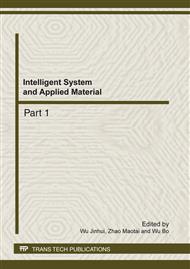p.907
p.912
p.916
p.920
p.925
p.930
p.935
p.940
p.946
Research on Random Drift Modeling and Error Compensation Method for MEMS Gyroscope
Abstract:
This paper presents modeling random drift by traditional time series method. In the modeling process, the real time average algorithm is proposed which can extract the constant drift of the MEMS gyroscope effectively to get random drift, and a modified recursive extended least squares (RELS) method for parameter estimation of the autoregressive moving average models (ARMA) is presented. The modified RELS algorithm consists of two-stage RLS algorithm which can on line be implemented, and has the fast convergence rate. After modeling, the corresponding Kalman filter is designed to make compensation for gyroscope random drift. The compensation results for the practical testing data of the MEMS gyroscope show that the model established can reflect the gyroscope random drift tendency with reasonable accuracy, and the gyroscope random drift can be effectively reduced by the filtering method presented.
Info:
Periodical:
Pages:
925-929
Citation:
Online since:
February 2012
Authors:
Keywords:
Price:
Сopyright:
© 2012 Trans Tech Publications Ltd. All Rights Reserved
Share:
Citation:


